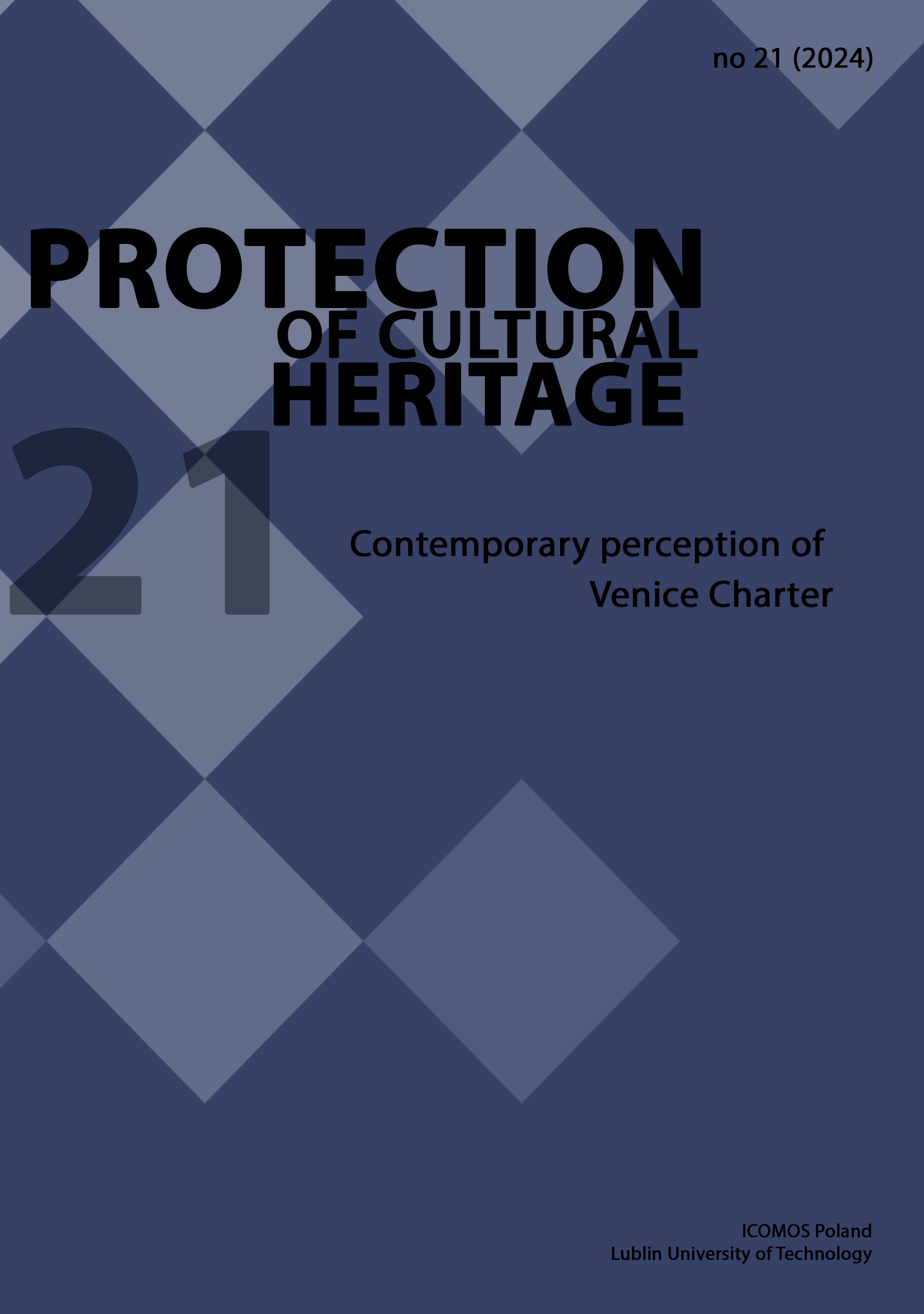On the necessity of symbolic interventions in dissonant monuments
Article Sidebar
Open full text
Issue No. 21 (2024)
-
The relevance of the Venice Charter today
Stefano Gizzi1-10
-
Venice Charter and its role in shaping concepts in the heritage protection system
Siwek Andrzej11-22
-
Charter of Historic Cultural Landscapes (CHCL) – proposal
Irena Niedźwiecka-Filipiak, Dorota Sikora, Łukasz Woźniak, Alicja Woźniak23-50
-
Andrzej Tomaszewski's "Pluralistic conservation philosophy" as a challenge: Do we have a problem with European identity?
Janusz Krawczyk51-61
-
Beyond Monuments: Rethinking Heritage Through the Mundane and the Ephemeral in Tokyo
Tamas Solymosi63-76
-
Venice Charter and the Development of Authenticity
Shirley Cefai77-101
-
On the necessity of symbolic interventions in dissonant monuments
Philipp Oswalt103-112
Main Article Content
DOI
Authors
Abstract
The Charter of Venice stipulates that changes to a monument are only permitted on the basis of functional requirements. Changes to the symbolic function are explicitly excluded. However, this principle leads to conceptual problems with dissonant heritage, as illustrated by a number of recent monument conflicts in Germany concerning buildings of National Socialism as well as anti-Semitic, racist, colonial and militaristic monuments.
The planned restoration of the Haus der Kunst München (1933-37) to its original state by Chipperfield Architects in accordance with the monument requirements has led to a controversial debate (since 2017), as has the symbolically unbroken continued use of the repeatedly modernized and renovated building of the 1936 Olympics in Berlin.
The insertion of Günther Domenig's Documentation Center (1998-2001) into the Congress Hall of the Nazi Party Rally Grounds in Nuremberg (1935-43) and the conversion of the Arsenal Main Building (1873-1877) into the Dresden Military History Museum by Daniel Libeskind (2001-2011) de facto overruled the premise of monument preservation, but the results were viewed positively by the public. The discussion about the appropriate way to deal with the depiction of Jewish sows in medieval churches is still ongoing. The requirements of monument preservation are at odds with the desire to distance oneself from anti-Semitic artworks. The competition (2023) for the desired redesign of the Bismarck monument in Hamburg (1906) has recently failed due to the conceptual conflict with the rules of monument preservation.
In the Anglo-Saxon world, debates similar to those in Germany have broken out in the context of the Black Life Matters movement. The essay argues in favor of granting dissonant heritage opportunities for symbolic interventions and thus deviating from the principles of the Venice Charter.
Keywords:
References
Ingrid B. (2024) et al ed., Ver/Störende Orte: Zum Umgang mit NS-kontaminierten Gebäuden. Vienna: Mandelbaum Verlag eG.
Braidwood E. (2017). Chipperfield defends proposal for Nazi-era Haus der Kunst, [in:] architects journal, January 24, 2017.
Diehl A. (2020). Denkmalstreit in Hamburg: Wenn Granit weich wird. Die Tageszeitung, December 30, 2020.
Marg V. (2020). Enlightenment instead of sculpture controversy, [in:] Die Zeit (23).
Marquard D. (2024). Denkmalschutz und NS-Architektur: Ein Spannungsfeld, [in:] S. Salzborn, (Ed.)., Monumentaler Antisemitismus? das Berliner Olympiagelände in der Diskussion, Interdisziplinäre Antisemitismusforschung (15). DOI: https://doi.org/10.5771/9783748942641-133
Sadiq A. J. (2022). Explanatory text of the competition entry "Lifting monument protection", manuscript.
Stiftung Historische Museen Hamburg. (2023). Rethinking Bismarck. International Open Ideas Competition, contributions. Hamburg.
Strieder P. (2020). Away with these sculptures!, [in:] Die Zeit (21).
Süddeutsche Zeitung. (2016). Radical ideas for the Haus der Kunst, December 9, 2016.
Zimmerer J. (2023). In conversation with Misch Kreiskott: Kein Gewinner beim Bismarck-Wettbewerb. Eine unmögliche Aufgabe. NDR, 26.7.2023.Philipp Oswalt112
Article Details
Abstract views: 162







